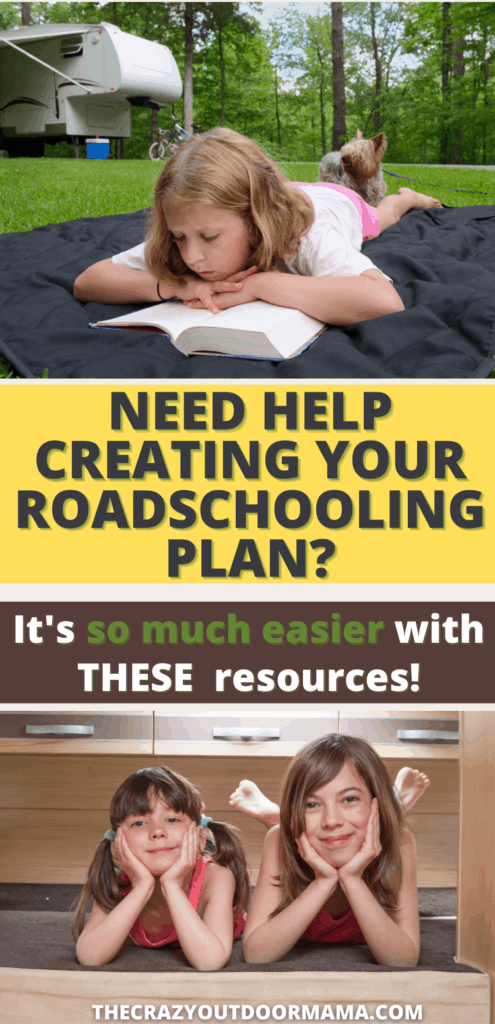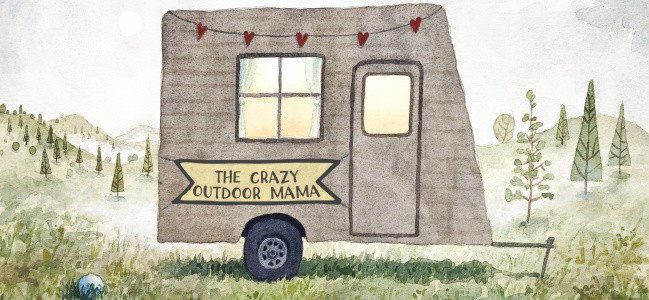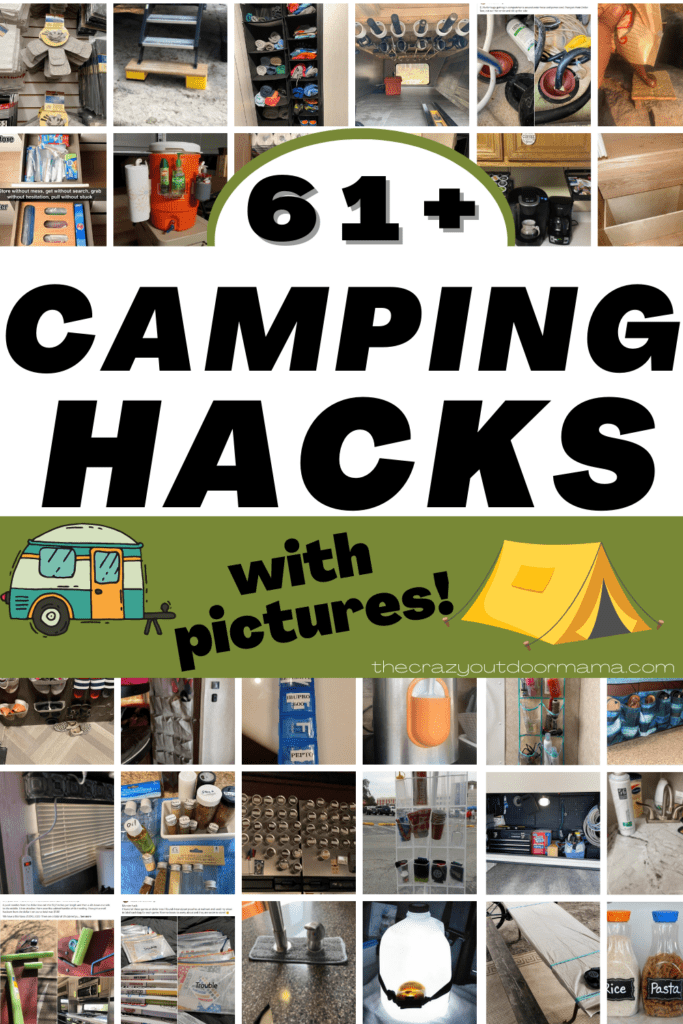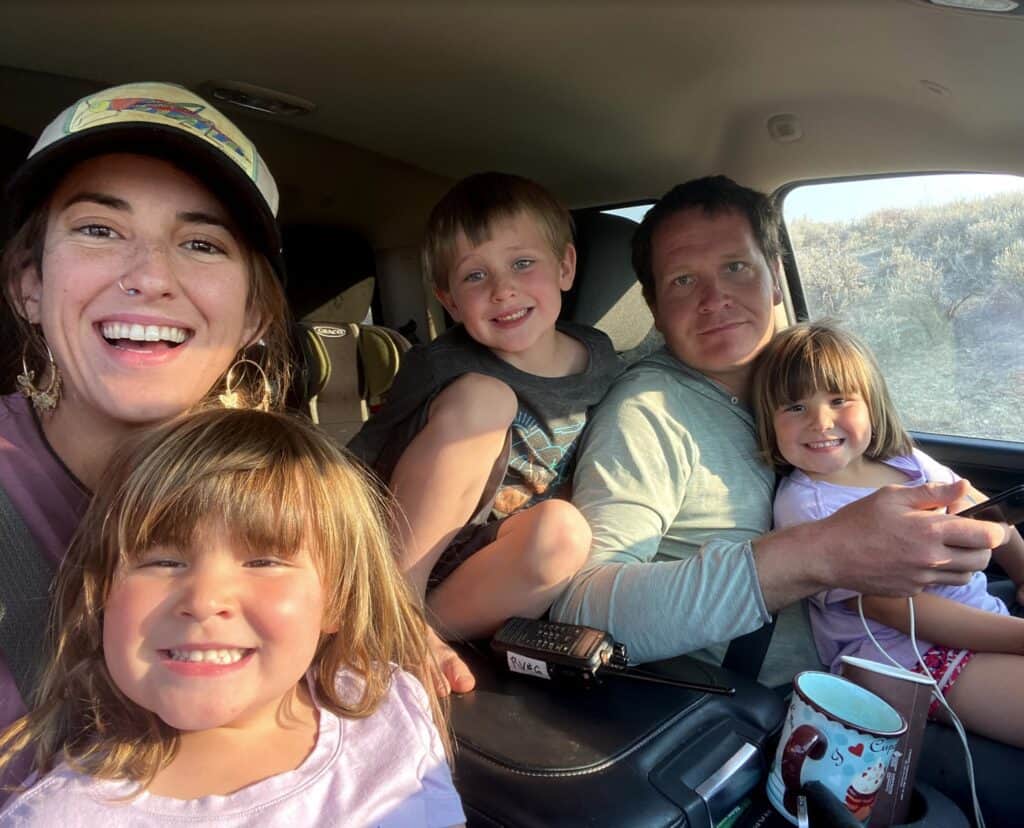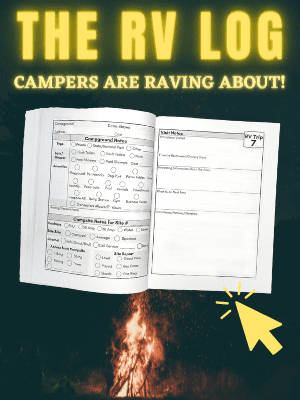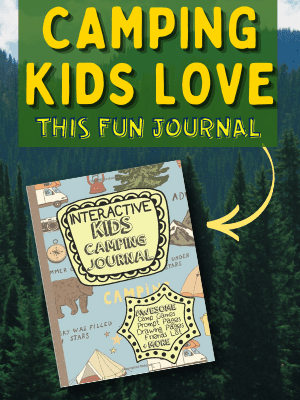- Top 5 Roadschooling Destinations in the Northeast and New England - September 2, 2021
- Top 5 Roadschooling Destinations in the Midwest - July 2, 2021
- Top 5 Roadschooling Destinations in the Southeast - June 21, 2021
Do you love the idea of roadschooling, but find the idea of implementing a quality educational experience on the road to be a bit intimidating? I get it! Roadschooling is an incredible opportunity, but it’s also a significant responsibility. Getting started can be overwhelming.
That’s why I want to help you plan your roadschooling curriculum!
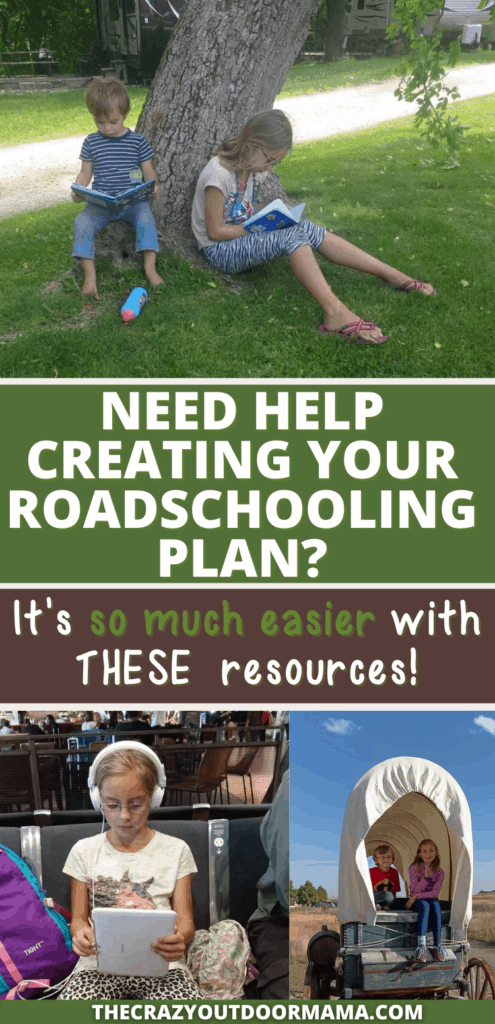
Table of Contents
Choose your Roadschooling Philosophy and Style
If you’re already homeschooling, you probably have a pretty good idea of your educational philosophy and the style that fits your family best. You’ll need to make some adjustments to transition to roadschooling, but your fundamentals will likely stay the same. If you’re not already homeschooling, being asked about your “educational philosophy” might make you a little uncomfortable. Don’t worry. This is not as intimidating as it sounds.
The beauty of roadschooling is the complete flexibility to shape your children’s education. The challenge is to figure out how you want to do that. There is no right or wrong answer and no one-size-fits-all solution.
There are many different homeschooling philosophies and styles out there that can be easily applied to a roadschooling environment. Learn more about them, experiment, and adjust and adapt as you go. Most people find that as they read about different styles, they connect with some more than others. You know your children best, so you are well qualified to find an approach that suits them.
Curriculum is a tool. A carpenter chooses the tool he needs to do the job rather than just grabbing a tool and deciding later what to do with it. In the same way, you won’t know what educational tools you need until you have a clear idea of what you’re trying to build.

Curriculum Basics
Grade Level
It may seem like a simple question, but if you ask my kids what grade they’re in, they struggle to answer. We talk about what grade they would be in according to their ages if they were attending public school, and that’s usually what people are really asking. But it’s a hard question because they are working on different grade levels in different subjects. They progress at their own pace, which is faster in some areas and slower in others.
Assigning different skills and knowledge to specific grade levels is necessary in a traditional school where many different teachers are working together to educate hundreds of students. It is far less important in a home education environment. For better or for worse, it is the system that our culture understands, so you may not want to throw it out entirely.
If you are planning for a time-limited season of roadschooling and your kids will be returning to a traditional school system, you’ll need to pay much closer attention to grade levels than a family who plans to homeschool or roadschool indefinitely. The idea of “getting ahead” or “falling behind” only has meaning if you have something to compare to.
There are many ways to measure progress. Grade levels are one way that may be important to you. You may also decide to choose other ways.
Print vs. Digital
There are advantages and disadvantages to both print and digital resources.
Using printed materials such as textbooks and workbooks is a very traditional way to teach. The feel of a book and writing down notes or answers by hand are very tactile experiences that help many kids to learn. These naturally encourage handwriting practice and the development of fine motor skills. They are also heavy, take a lot of space, and can be very expensive. Space and weight are at a premium in an RV, and if you are using print materials for multiple children in multiple subjects, it adds up fast.
Using digital materials can save a lot of space and weight. Their portability is not only an advantage for RV living, but also for being able to do school work almost anywhere. Digital resources are often less expensive than traditional textbooks and workbooks.
An added expense, however, is that schooling with digital materials works best when each child has his or her own device to work with. Some parents are concerned about the increased screen time of using digital resources. Use of online resources can be impacted by access to high-speed internet as you travel.
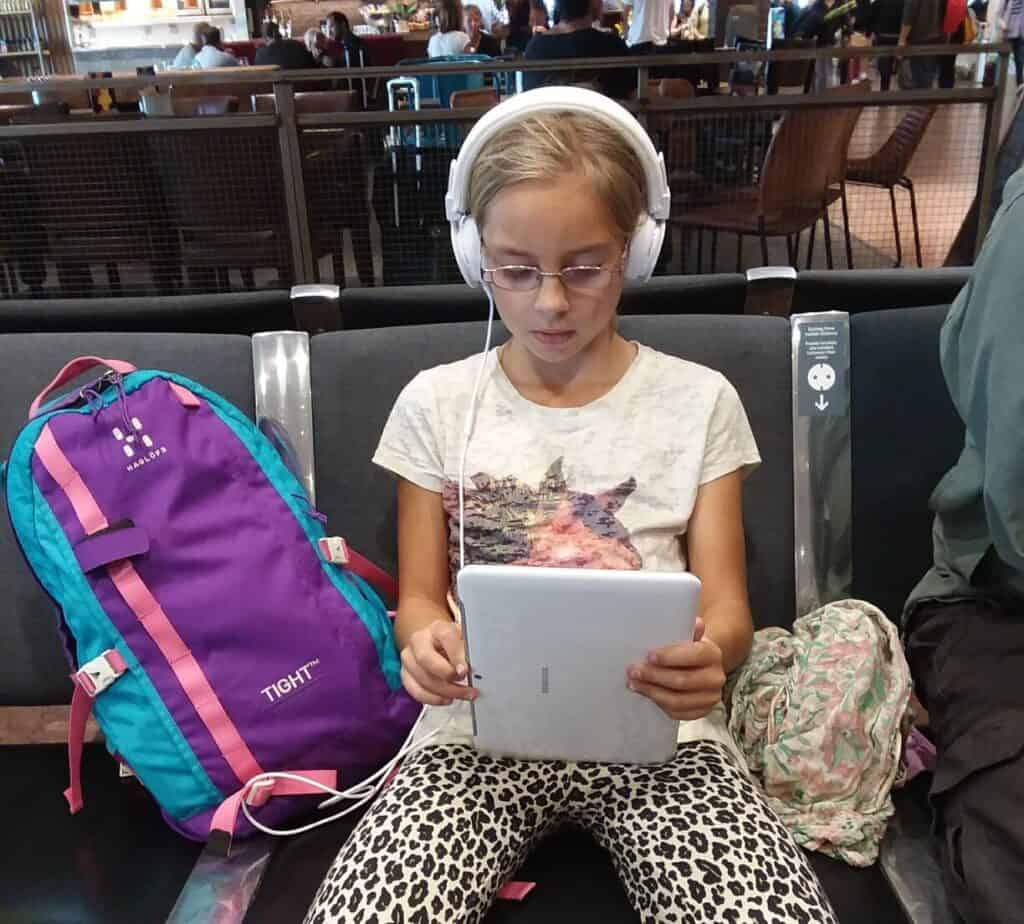
The solution that works best for your family will depend on your educational philosophy, your travel style, and your other priorities. Most roadschooling families rely on a mix of print and digital resources in order to gain the benefits of both.
Textbooks, Workbooks, Literature-Based

The type of curriculum you are looking for will be heavily influenced by your roadschooling philosophy and style. You may also have specific curriculum requirements dictated by your state of residence. Read more about roadschooling legally.
If you are planning to follow a strict curriculum, look for one that follows state and national standards. If your children will be returning to a traditional school system, consult with the school to find out what they should be working on while traveling to ensure a smooth transition when they return.
Families who choose a less structured style may be looking for thematic materials or a variety of books (both fiction and nonfiction) to promote exploration of various topics.
Those who plan to use digital resources should consider if they are looking for a comprehensive online curriculum, or if they would prefer to download individual worksheets and other resources on an as-needed basis.
Teaching Thematically
Teaching thematically lends itself well to roadschooling because the whole family can easily immerse themselves in a common theme, while each child works on age-appropriate skills or projects related to the theme.
There are many ways to implement this practically. Families can choose read-aloud books (or audiobooks) that relate to the topic. Plan meals and even clothing according to what you are learning, and get the whole family involved in researching and planning this. Make simple crafts and use them to decorate your rig in a way that makes the theme fun and memorable. Maps, flags, artwork, and objects from natural are very visual ways to immerse yourself in your theme. Consider music, movies, and other ways to try to engage all the senses.
Whenever possible, try to choose themes that connect with the places you are traveling. Or perhaps choose your travel plans to support a specific theme. This is the ultimate way to maximize the benefits of roadschooling and experiential learning!
Matching Travel and Teaching
Your circumstances will determine your starting point for matching travel and teaching. If your job dictates where you travel, then start with your travel route and plan your teaching themes around that. If you have more curriculum-based constraints but flexible travel plans, then use the curriculum as the basis for your travel.
Because we are not restricted by either, we often brainstorm places we’d like to visit and things we’d like to learn. We try to stay flexible to be able to take advantage of opportunities as they arise. We also try to follow the interests and passions of our kids, going deeper in areas that seem to capture their imaginations.
Examples of Travel-Based Teaching
Oregon Trail
One of our favorite roadschooling units combining travel and curriculum was when we studied pioneers and the Oregon Trail. We read Laura Ingalls Wilder’s Little House series together as a family, then spent several weeks traveling the route of the Oregon Trail. History and literature formed the basis for this unit, but it was easy to incorporate other subjects and learning as well.
The Junior Ranger materials at Scotts Bluff National Monument were a great resource for discovering the geology of the area, in addition to the history of the trail. Hiking helped us imagine crossing this landscape without a car and gave us an up-close experience of the unique rock formations and wildlife of the area. We also explored fossils along the way at Agate Fossil Beds National Monument, and stopped at a hands-on science museum that had free admission with our ASTC Passport membership. Understanding the statistics of the Oregon Trail, including the number of people who traveled the trail and the distances they covered, gave us abundant opportunities to practice math skills.
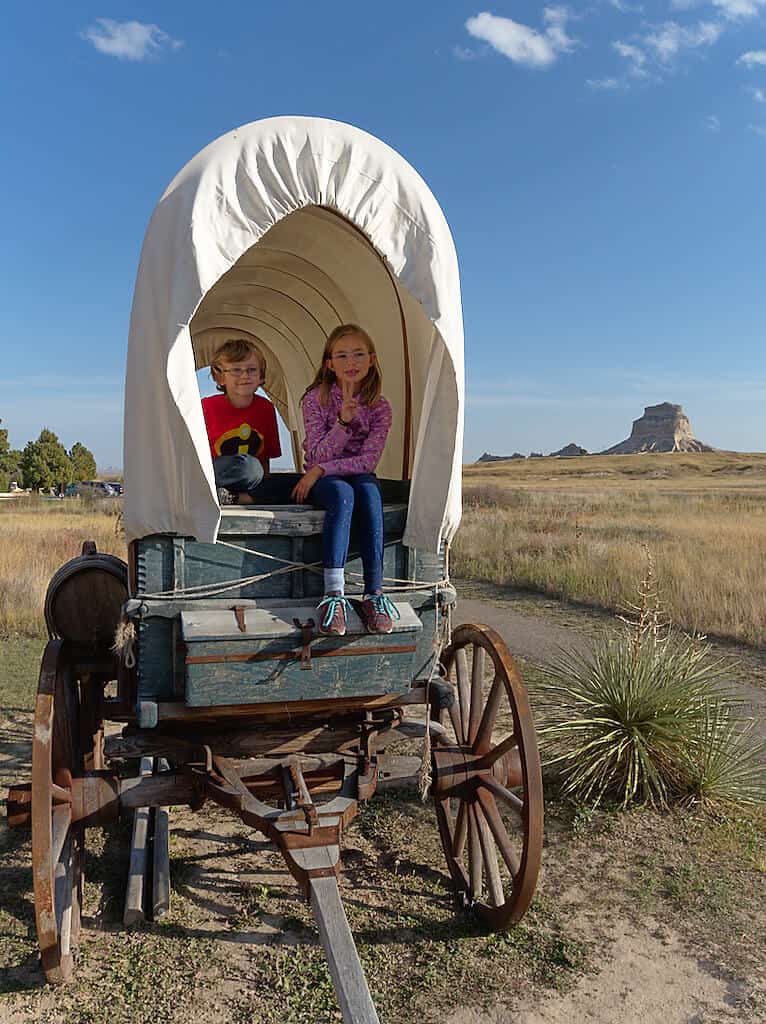
American Revolution
While exploring the East Coast, we did a unit study on the Revolutionary War and the founding of the United States. We visited important battlefields such as Yorktown, and the cities of Philadelphia and Boston. Once again, Junior Ranger materials from the National Park Service gave us resources for deeper learning as we explored these historic places. We attended ranger programs and interviewed actors playing the roles of Founding Fathers and other central figures. During this time, we read children’s books about George Washington, and the famous poem “The Midnight Ride of Paul Revere.” Videos and short documentaries about the war really complemented the experience of visiting the sites in person. This unit brought history to life for all of us.

Ecosystem Studies
One spring, we crossed the country from the West Coast to the East Coast along a southern route. We were headed for a family event, so we needed to keep a quicker pace of travel than we normally would. While we couldn’t plan long stays for in-depth studies along that trip, the pace gave us the opportunity to compare ecosystems in a new way.
Beginning in southern California, we learned that there are different kinds of deserts. Some don’t look at all like we expected. Through the car windows, we watched the landscape change from mountains and deserts, to plains and agricultural fields, to tropical and almost jungle-like environments. We stopped along the way to take hikes and observe the plants and animals that lived in each area. We also learned more about how the local environment shaped the history and culture of each place. Maps, field guides, and nature journals were indispensable learning tools on that trip.
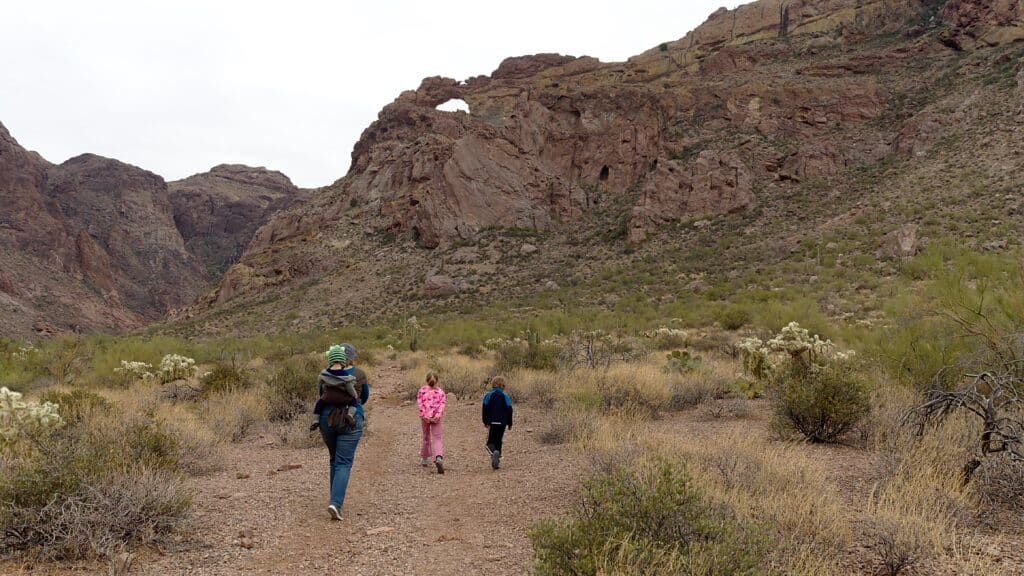
Learning the Intangibles
Reading, writing, and ‘rithmetic are essential, and we make sure we’re covering social studies and science, too. Our kids are also learning art, music, languages, typing, coding, handwriting, and home and life skills as a part of their school time.
A common concern about roadschooling, though, is that kids might miss out on learning less tangible skills. Social and interpersonal skills are high on this list, as well as things like independence, responsibility, and discipline. As a former classroom teacher, I know that schools are increasingly expected to teach a lot more than academic subjects. So much so, in fact, that people now wonder if children can learn these intangible skills without attending school.
I acknowledge that we might all have different definitions of what these skills are and how they are best developed. Having spent several years in the roadschooling community, I can attest that roadschooling provides plenty of opportunities to learn these so-called “soft skills.” Most often, this happens in very natural ways that don’t need to be specifically planned into your curriculum.
Our kids are great at making new friends. They are not shy of new situations or new groups of people because this is a normal part of their lives. Thanks to organizations like Fulltime Families, we have great friends within the roadschooling community, and it’s not unusual for groups of families to choose to travel together for a season.
When groups of roadschooled kids come together, we see mixed ages and genders playing together. Older kids help and encourage younger kids, and we rarely see instances of bullying or negative peer pressure. Because of the different circumstances they are regularly exposed to, roadschooled kids often gain real-world experience of situations that might be role-played in a classroom setting. They are typically very accepting of differences and relate well to people of all ages, kids and adults. There are exceptions to this, of course, as there are in any group. Nevertheless, roadschooling gives kids unique opportunities to develop these intangible skills.
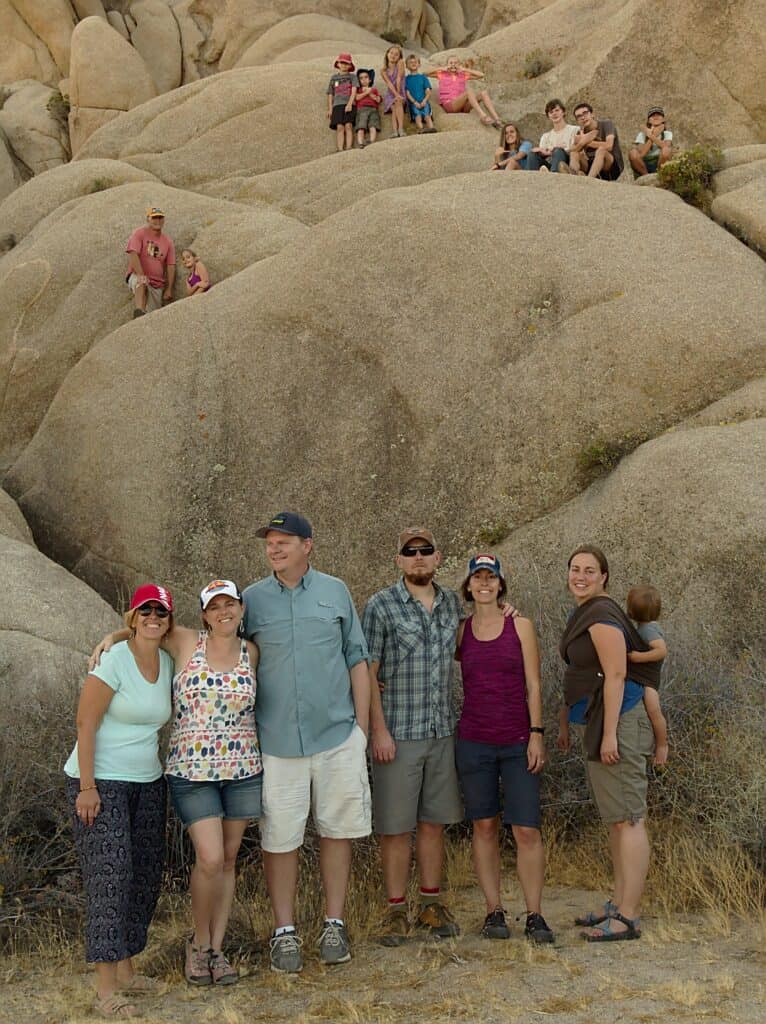
Space vs. Supplies
One of the biggest challenges of roadschooling is the space and weight limitations that come from living in an RV. In addition to curriculum, finding the balance between saving space and having other learning supplies can be tricky.
Here are some tips to overcome these challenges:
- Aim for Multi-use Items. There are lots of great learning aids and homeschool tools available at your local teacher supply store, but you can often accomplish the same thing with multipurpose items. Toys, such as Legos, make great math manipulatives. Teaching fractions using chocolate bars is fun and space saving. Choose science experiments that use ordinary kitchen equipment. Letter tiles from games like Scrabble or Bananagrams can be used for reading and spelling practice. Creativity saves space.
- Borrow and Trade. Remember that other roadschooling families are experiencing the same struggle that you are. If you have resources that your kids are finished with, why not offer them to another traveling family? If you are camped with other families, you may be able to borrow something you need. Organize swap tables with other families to help clean out things you don’t use and get some cool stuff (for free!) that you will use.
- Choose Second Hand. Second-hand or thrift stores can be treasure troves for roadschoolers. Think of second-hand items as inexpensive rentals. Buy something from the second-hand store, use it for a while, then drop it off at another second-hand store along your travels. Approaching it with this attitude can help you get the things you need without accumulating more and more stuff.
- Use Storage Wisely. RV closets and storage areas are notoriously bad. They can be oddly shaped and hard to use well. Don’t be afraid to renovate your rig. You can add storage to unused spaces, add shelves to existing closets, or whatever makes your space more usable. Just make sure that as you pack in more stuff you aren’t exceeding your weight limits.
- Go Digital. All those creative projects your young scholars are working on can add up quickly. Soon you have so much work that they’ve done that it’s hard to find room for making new things. Set a time limit on how long most things will be kept, then preserve them digitally (take a picture or scan the document), and ditch the hard copy. Going digital can also apply to educational resources. We ditched our multiplication flashcards, for example, when we found an easy way to practice those facts online. Ebooks and audiobooks help us keep a much more extensive library than we would otherwise have space for.
How Much Time to Plan for School
“How do you find time to fit it all in? It’s hard enough to balance school and work along with all the usual tasks like laundry, grocery shopping, cooking, cleaning, and paying bills. I can’t imagine adding travel into that equation too!”
This is a very common question about roadschooling, and it’s an understandable one. There are a lot of different pieces to this question, but it is important to understand that the time involved in roadschooling is not the same as a traditional school model.
For starters, roadschooling assumes that all of life is learning. All those things that you need to do can be a part of “school” instead of in addition to school. Grocery shopping, doing laundry, budgeting, and chores are overflowing with learning experiences if you look for them. Take the kids with you to do these things and get them involved. Also remember that travel is a part of their learning process, not something to be tacked on later.
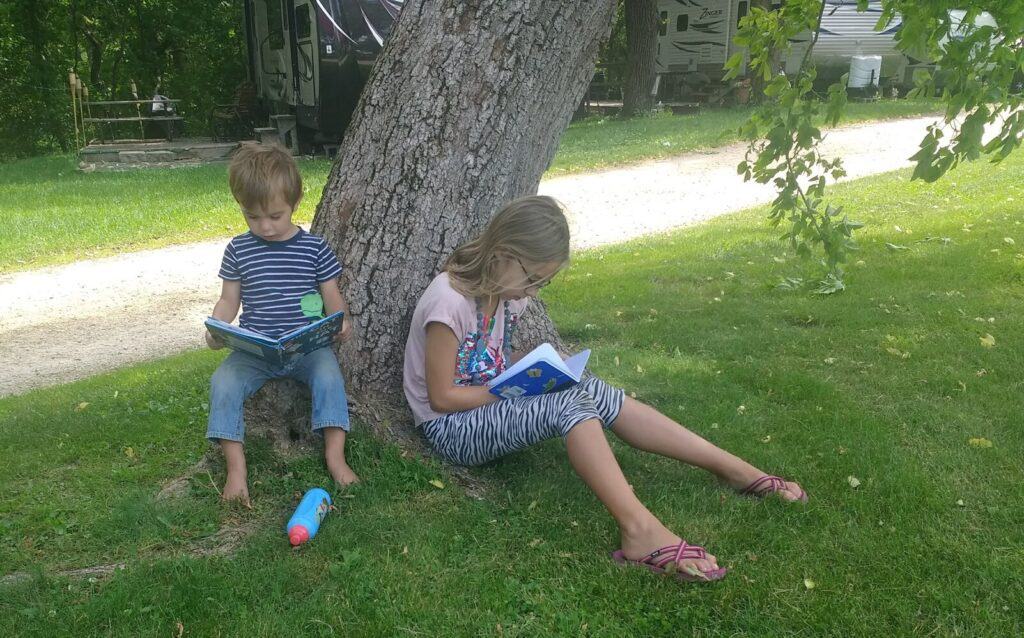
When it comes to more formal school time, you don’t need to block off six or seven hours per day. Every child is different, but most upper elementary kids can maintain their appropriate grade level in as little as 2 hours per day. Younger kids might only need 30-90 min. Older kids may need more time but not always. Working at their own pace, without many of the distractions and transitions that take so much time in traditional schools, most roadschooled kids can sleep in and still have their school work completed before lunch.
Our Favorite Resources
When it comes to curriculum and resources, there are lots of great options out there. Remember, it is very important to decide your roadschooling philosophy and style before choosing curriculum and materials.
Our philosophy is a somewhat eclectic mix of multiple philosophies. We value hands-on, experiential learning, and see many advantages to a literature-based approach. We also want to follow a similar structure to traditional schools in order to keep our options open for the future and make sure we aren’t missing important skills.
These resources are working well for us right now.
- Moby Max. Moby Max is our base curriculum that covers pre-K through 8th grade in most subjects. We pay a monthly subscription that includes all three of our kids. We love that each subject (or module) is independent, so kids can work at their own pace. They can work on 3rd grade material in language arts, but move up to 4th or 5th grade math if they’re ready. Each of our kids has an Android tablet that they use for school work. Moby Max uses a web browser and requires an internet connection.
- Teachers Pay Teachers. Teachers Pay Teachers is a great place to supplement our curriculum with creative ideas, learning games, or worksheets. There are both free and purchased resources. Prices vary because contributors set their own prices, but when you buy a resource, you are supporting a teacher and not a big publishing company.
- LeapFrog Videos. All three of our kids knew their letters and phonics sounds when they were 2-3 years old and easily transitioned to reading simple words by age 3-4. We didn’t push reading early, but they picked it up easily through the Letter Factory and Talking Word Factory videos from LeapFrog. There are several in the series. We love the set that comes with letter flashcards that correspond to the movie characters. It’s the best resource I know of for helping kids learn to read.
- TypeTastic. TypeTastic is a free site that teaches kids typing skills. The games are fun and organized into different units for different age groups. There are different activities to teach, practice, and evaluate learning of different keyboarding skills. Typing is an essential skill so we wanted to start early.
- Handwriting Fonts. Rather than buying handwriting workbooks, I create my own handwriting sheets using handwriting fonts. I choose a text for them to trace and then provide lines for them to copy on their own underneath. The copy work usually ties in to something we’re learning. It could be a quote, a poem, a Bible verse, or anything we want to reinforce. I like the KG Primary Penmanship font package, which is free for personal use.
Planning your roadschooling curriculum can be as simple or as complex as you choose to make it. Stay focused on your goals for your roadschooling season, whether it’s for a year or indefinitely. Give yourself time to figure out what style best fits your family’s needs, and be flexible to adjust along the way. With the right mindset and a few key resources, your whole family will benefit from this roadschooling opportunity. Enjoy!
